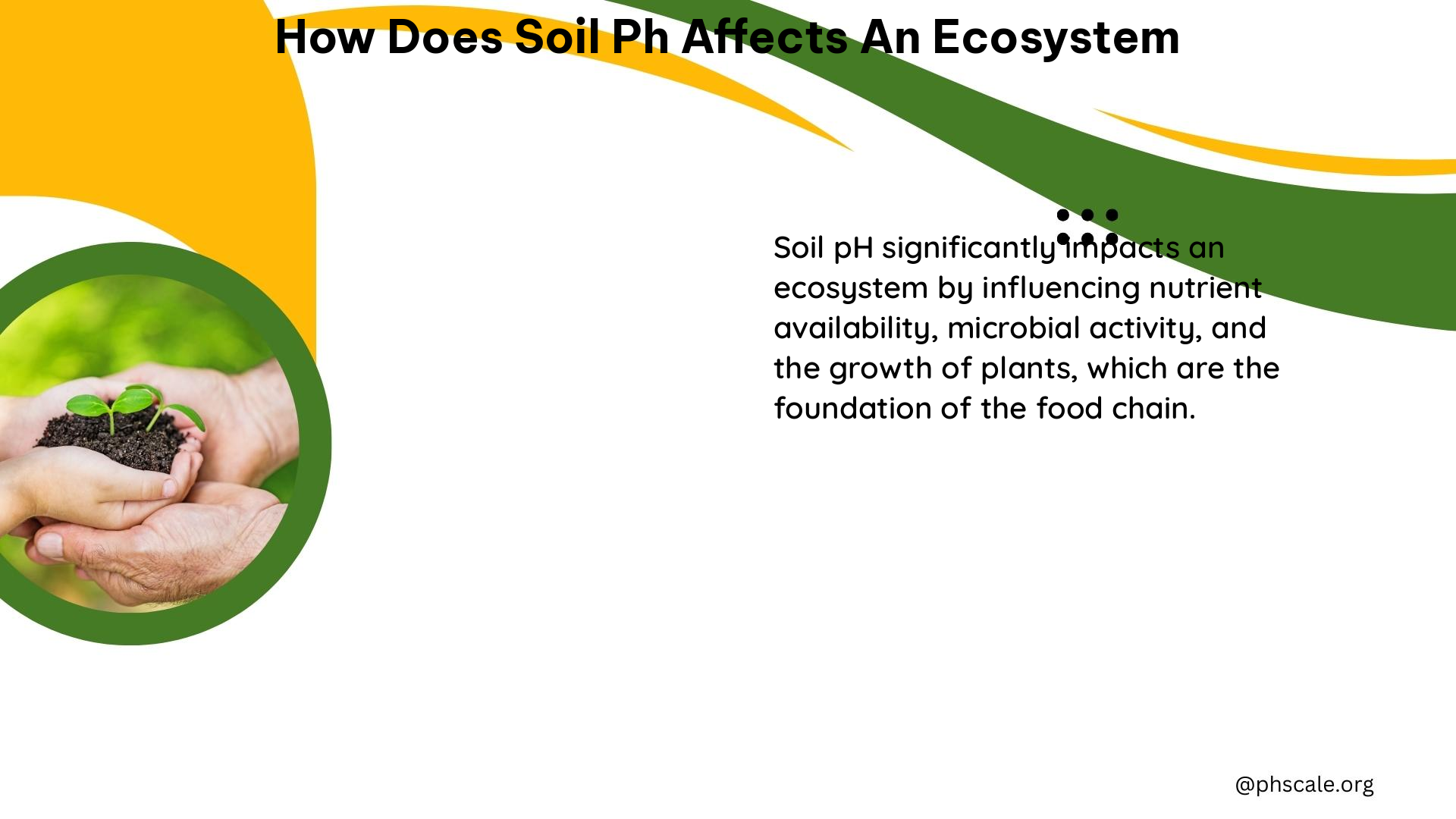Soil pH is a critical factor that significantly impacts the overall health and functioning of an ecosystem. It influences the availability of essential plant nutrients, the activity of beneficial microorganisms, and the growth and decomposition of organic matter. Understanding how soil pH affects an ecosystem is crucial for maintaining a balanced and thriving environment.
The Impact of Soil pH on Ecosystem Processes
Nutrient Availability
Soil pH plays a crucial role in determining the availability of essential plant nutrients. Most plants thrive in a pH range of 6 to 7, where nutrients like nitrogen, phosphorus, and potassium are readily available. However, at low pH levels, nutrients like phosphorus and molybdenum become less available, while elements like aluminum and manganese can become toxic to plants. Conversely, at high pH levels, calcium can tie up phosphorus, making it unavailable to plants, and molybdenum can become toxic in some soils.
Microbial Activity
Soil pH also affects the activity of beneficial microorganisms, such as bacteria and fungi, which play a crucial role in decomposition and nutrient release. In highly acidic soils, these microorganisms are less active, leading to reduced decomposition and nutrient availability. This can have a cascading effect on the entire ecosystem, as the availability of nutrients is essential for plant growth and the overall health of the system.
Plant Growth and Decomposition
Soil pH directly impacts plant growth and productivity. Plants that can survive in low pH conditions may dominate the surrounding area, while plants that require specific pH ranges may struggle to grow. Additionally, pH levels influence the decomposition of organic matter, which is essential for nutrient cycling and soil health. Proper pH management is crucial for maintaining a balanced and thriving ecosystem.
Soil Structure and Erosion
Soil pH can also impact soil structure, with highly acidic soils being more susceptible to erosion and structural breakdown. This can lead to the loss of valuable topsoil, which is essential for plant growth and ecosystem stability.
Impact on Soil Biota
Soil pH affects the diversity and activity of soil biota, including bacteria, fungi, and other microorganisms that play critical roles in ecosystem processes. Changes in soil pH can disrupt the delicate balance of these organisms, leading to cascading effects on the entire ecosystem.
Managing Soil pH for Ecosystem Health

To effectively manage soil pH and maintain a healthy ecosystem, it is essential to:
- Test Soil pH: Regularly test the soil pH to determine if it needs adjustment.
- Adjust pH Levels: Use lime to raise pH levels and sulfur to lower them, ensuring the correct application rates to avoid damaging plants.
- Monitor Nutrient Availability: Ensure that essential nutrients are available to plants by maintaining optimal pH levels.
- Maintain Soil Health: Promote soil health by maintaining a balanced pH, which supports beneficial microorganisms and decomposition processes.
By understanding the critical role of soil pH in an ecosystem and taking the necessary steps to manage it, you can help ensure the long-term health and sustainability of the environment.
References:
- Veransa Group. (May 2024). How Soil pH Affects Your Plants and Trees. Retrieved from https://veransa.com/how-soil-ph-affects-your-plants-and-trees/
- Agriculture Victoria. (2024). Soil Acidity. Retrieved from https://agriculture.vic.gov.au/farm-management/soil/soil-acidity
- Frontiers in Plant Science. (2018). Effect of Soil pH on the Growth, Reproductive Investment and Pollen Allergenicity of Ambrosia artemisiifolia. Retrieved from https://www.frontiersin.org/journals/plant-science/articles/10.3389/fpls.2018.01335/full
- Samantha Sihakoun. (n.d.). Soil Lab. Retrieved from https://samanthaapes.weebly.com/soil-lab.html
- EnvirothonPA. (n.d.). pH Guide. Retrieved from https://www.envirothonpa.org/documents/pH_guide.pdf
